Question
Study problem-solving (decision- making) integrative case in the end of the textbook and prepare case study report following the four-step case study model introduced below.?
Study problem-solving (decision- making) integrative case in the end of the textbook and prepare case study report following the four-step case study model introduced below.?
Identifying problems
Analyzing Reasons
Prescribing Alternatives
Decision Implementation
In addition to these four steps of analysis, add a background introduction part to the beginning and a conclusion.
Case Study
INTEGRATIVE CASE 6.0 Lean Initiatives and Growth at Orlando Metering Company*
It was late August 2002 and Ed Cucinelli, vice president of Orlando Metering Company (OMC), sat in his office on a late Saturday morning. He had come in to prepare for some strategic planning meetings that were scheduled for the upcoming week. As he noticed the uncommon silence in the building, Ed contemplated the current situ-ation in his organization.
The Orlando Metering Company was one of sev-eral facilities owned by a leading manufacturer of water meters for the worldwide utility industry. The facility specialized in the assembly, testing, and repair of water meters used to measure the amount of water consumed by private homes, organizations, and large cities. In 1999, OMC started the process of moving from a tra-ditional manufacturing to a lean manufacturing orga-nization with a fully empowered workforce. Due to the tremendous success the organization had achieved, the corporate headquarters decided to transfer four new product lines to the Orlando facility in 2001. This trans-fer resulted in considerable expansion of the business, doubling the number of employees and shifts needed at the plant and quadrupling the revenues of the organi-zation. As Ed looked through some old pictures on his desk, he reflected on how proud he was of everything that his leadership team and employees had been able to accomplish in the short year-and-a-half timeframe that was given to them by the headquarters. However, the organization was currently experi-encing some very tough challenges due to the recent change and expansion. Although OMC successfully brought in the new business, Ed and his management team made some mistakes in the transition. When he walked through the production floor, Ed could feel that the energy and commitment of the employees were at an all-time low. He knew that his current 108 employ-ees were stressed and unhappy. Turnover and absen-teeism were at an all-time high, and productivity and quality were suffering. The organization had lost a lot of the momentum it had gained in its implementation of lean manufacturing. Just last week, Ed had received a call from his supervisor at corporate, expressing con-cerns about the current situation at OMC. The corpo-rate headquarters had given Ed and his leadership team three months to turn things around and show some improvements. Ed knew that it was time to take some serious
action. He knew that the process side of planning the inventory and physically assembling the meters according to the principles of lean manufacturing were working efficiently in his facility. However, the company had lost the team-based, lean manufacturing culture in which the employees took ownership and worked together as a team to solve problems and run their own work cells. He knew that to truly take advantage of the potential of the lean layout and processes operating in his plant, the company needed to have the culture to support it. Ed knew that it was the right decision to keep the lean production process in the operation, inventory planning, and assembling meters. However, he needed to decide whether to refocus the organiza-tion on re-establishing the team-based, lean culture and thinking that it had lost or return to the traditional top-down management methods of the past.
Background Fresh out of college, Ed began his career at OMC in 1993 as a mechanical engineer. The company was orig-inally founded in Orlando, Florida in 1974. The PMG group, OMC's parent company based in Europe, was seeking growth opportunities and saw the United States as a great opportunity given the size of the market and the fact that OMC's product offered a new technology compared to those available at that time. There were many styles of water meters for different applications, and OMC's new product at that time provided a solution to issues within the market, mainly suspended solids (i.e., sand) in the water. Traditional meters would slow down and stop due to suspended solids, thus reducing a water utility's revenues. This new meter allowed the suspended solids to pass through and provided better accuracy for measuring water use, thus increasing revenues. There-fore, the meter quickly gained acceptance in many mar-kets and the company had grown since the new meter's introduction.
As sales continued to increase, so did the number of employees and the need for more space. Ed was in charge of designing and overseeing the construction of a new facility. Having no prior experience of working within a lean enterprise, Ed designed the new facility as a larger model of the old. Adding more space and more equipment did not create more efficient workplace, but with the right people, the company still accomplished the job. As he sat in his office, Ed remembered the long nights working side by side with maintenance, quality, and production personnel, all trying to ensure that the new facility move would be successful. The power of teamwork was evident as the employees completed the project in a timely fashion and production efficiencies remained stable. At this time, many of the employees at OMC had been with the company for nearly 10 years. Employees knew each other and each other's families, and they felt a sense of responsibility to one another. Even though OMC did not have the best tools, offered a compensation package that did not exceed the market average, and ran without air-conditioning, the employees felt that they belonged to something special.
The Decision to Go Lean In 1998, OMC's parent company was purchased by a much larger competitor. Soon after, the board of directors came to Orlando for a board meeting. The board decided to pur-sue a lean manufacturing culture within the organization. At that time, however, none of the company's facilities oper-ated in a lean manner. As a test and learning experience, the board decided to challenge the Orlando plant, and it gave the facility an aggressive nine-week timeframe within which to implement the reconstruction of the production floor and change the manufacturing process to lean. At this point, Ed accepted the position of Lean Cham-pion, where he became responsible for implementing the lean changes and initiatives. Ed knew that all of the employ-ees at OMC would need to be involved if the organization was to successfully achieve this nine-week goal. Immedi-ately, the leaders of the plant held a plant-wide meeting and outlined the goals. Everyone quickly realized that the small Orlando facility would be closed and relocated to one of the large sister facilities if the change was not successful. Ed organized the employees into teams, conducted lean training, and provided constant management of the project and deadlines. All employees responded, and through long hours, many weekends, and a lot of sweat, all production lines and half of the office processes were converted to uti-lize the lean concepts. Exhibit 1 details the specific timeline that was developed and accomplished.
Background on Lean Manufacturing The goals of implementing lean manufacturing at the OMC facility included improving material handling, inventory, quality, scheduling, personnel, and customer satisfaction. In general, the key objectives of the lean facility's layout and flow were to deliver high-quality, low-cost products quickly while maintaining a safe and pleasant working envi-ronment (Henderson and Larco, 1999). By implementing just-in-time (JIT) production, one-piece flow, self-directed work teams, and cellular manufacturing, the leaders expected the following improvements to occur as part of the new lean environment:
1. A decrease in the cost of space, inventory, and capital equipment
2. A reduction in throughput time, cycle time, or lead time 3. An increase in capacity utilization 4. A reduction in lost-time accidents.
Lean Initiatives and Growth at Orlando Metering Company?
Lean is not only a production system of tools and pro-cesses to continually improve, but it also involves imple-menting a culture and atmosphere in which the systems and tools can be best utilized. Without the culture and support of all the people, the benefits cannot be maximized. Exhibit 3 illustrates the principal components of lean production, and Exhibit 4 provides details on lean management and the key elements needed to sustain a lean manufacturing culture.
?
Strategic Advantages of Lean Manufacturing Manufacturing lead time
| Manufacturing lead time | Reduced by one day |
| Delivered quality | Three parts per million (PPM) 99+ percent |
| Delivery performance Inventory turns | Greater than 50 |
| Conversion cost (materials to finished goods) Manufacturing space | 25 to 40 percent less than mass producers 35 to 50 percent less than mass producers |
| New product development | Less than six months |
| Manufacturing lead time | Reduced by one day |
| Delivered quality | Three parts per million (PPM) 99+ percent |
?
?
?
?
Becoming the Lean Showcase Next, the employees and leaders needed to work together to transform the company into a lean showcase. Ed knew that simply making changes to the production processes would not create the lean showcase that the board expected. Although employees were supportive and dedicated, the management team provided most of the direction and led the change. As discussed above, one of the critical elements to the successful implementation of a lean environment is the development and maintenance of a self-directed, empowered workforce (Henderson and Larco, 1999). Ed realized that the time had come to transition to team-based production lines. Over the next few months Ed and the OMC leadership team, with the help of a trainer, began an intensive team-based training program. The employees went through team skills training, including sessions on feedback and communication, problem solving, meeting skills, team dynamics, and an informal session on company financials. The teams began to see the results of the training and hard work. They began to run their own team meetings and sug-gested and implemented eight to 10 improvements a week in areas such as quality, safety, and productivity. The employ-ees were motivated and encouraged by all of the progress and success.
At the same time, the leaders at OMC were focused on making a more comfortable and friendly work envi-ronment. This was accomplished by adding new lighting that tripled the brightness of the facility; painting the floor, walls, and equipment; and installing air-conditioning. Leaders even placed live plants throughout the facility. These changes helped promote the concept that employ-ees played a key part in the success of OMC. The facility looked clean and beautiful. Exhibit 5 provides before and after pictures of the facility.
After an 18-month implementation cycle (which included the physical changes to the manufacturing floor as well as the implementation of lean manufacturing pro-duction and administrative processes), the organization was able to achieve the following benefits: ? The managers and employees were able to reduce inventory by 50 percent and completely eliminate fin-ished goods.
? Quality control changes resulted in the conversion to 100 percent testing of all products without adding any additional employees or equipment.
? The plant was able to cut total production cycle times from days to minutes (typically one to two days to process reduced to five to 15 minutes).
? Total floor space was reduced by 41 percent (so much that a basketball court was added within the facility), as displayed in Exhibit 6. Exhibit 7 details the cost involved during the nine-week transformation of the physical manufacturing floor to lean production. Working together, the employees and leaders had suc-ceeded in establishing the lean showcase, and the board of directors took full advantage. People from sister companies around the world came to Orlando. They toured the facility to learn about lean manufacturing and the best methods to implement it. Tours were given by the employees. There was no better evidence of the power of lean manufacturing and empowerment than seeing an hourly employee give a pre-sentation to a VP of operations of another facility. Morale was at its highest point ever. There were no obstacles that this Orlando facility could not overcome. At this point, Ed and the leadership team knew that the OMC facility was being underutilized. They needed more business.
Over the next year, the Orlando facility continued to
be the "showcase." Performance continued to improve. The rapid success of OMC captured the attention of OMC's customers as well as other corporate officers. In 2001, the board decided to relocate four new product lines from a sister facility to OMC. Although OMC had installed new production lines in the past, this change rep-resented a much larger scale. It would require doubling the workforce, quadrupling sales, and converting the existing production lines to utilize the lean concepts, all within 18 months.
Rapid Growth at OMC
Ed was the project manager responsible for the transition of the new business into the Orlando facility. However, nine months into this project the current VP of operations was promoted and Ed became the VP of operations, in charge of the entire Orlando facility. Although slightly behind schedule, Ed and his lead-ership team and employees completed the project in 20 months, and they exceeded the projected savings. Lean manufacturing again provided significant benefits to the OMC operations. Through the change, OMC achieved significant savings in labor costs, floor space, and process times, as exhibited in Exhibit 8.
Ed enthusiastically led the new change, but the
technical challenges in the transition of this product proved more difficult than expected. The union facility from which the product was transferred relied solely on the worker's experience in manufacturing the meters, so the facility had kept limited product and process documentation. The engi-neers at OMC constructed new test equipment to replace the 40-year-old technology previously used. There were also many challenges with the products, as many of them were designed nearly 50 years earlier and meeting current quality demands proved difficult. The project had placed a large strain on the resources in the Orlando facility, and many sacrifices were made. In order to ensure that the proj-ect was completed on time and that the change was seam-less for the customer, the leadership team focused heavily on overcoming the technical hurdles with the production of the new meters. In doing so, the team failed to address the impact on the employees and the other critical people issues that arose during the change process. The leadership team quickly learned that the success it had experienced in the recent past would be short-lived, as the lean culture had deteriorated and the team-based structure no longer existed at OMC. Exhibits 9, 10, and 11 detail the longitu-dinal changes in on-time delivery, turnover, and inventory turns as a function of OMC's sales.
Exhibit 12 summarizes the overall timeline of the changes that have occurred at OMC since the facility was built in 1996.
Current State at OMC?
Ed now sat in his office contemplating the current state of the organization. It had taken 20 months to complete the project, and OMC had increased its number of employees from 50 to its current total of 108. Ed and his leadership team had relied heavily on the use of temporary agencies to provide them with new employees. Ed looked at the latest staffing sheets on his desk and calculated that 40 percent of OMC's current employees were temporary workers hired through the staffing agencies. The decision to use tempo-rary employees was not Ed's preference. Without a human resource department to accommodate the rapid growth, Ed lacked enough qualified staff to help with the rapid recruit-ing, interviewing, and hiring of 58 additional employees. Therefore, he and the leadership team had resorted to the use of temporary agencies. His hope had been that the tem-porary agency would do the pre-screening for OMC and recruit qualified individuals whom OMC could later hire into full-time positions. However, the lack of appropriate qualifications, low levels of loyalty, and high turnover of the temporary staff, as well as the fees and costs involved in maintaining the temporary employees, had caused a large setback for OMC in its maintenance of the lean, team-based culture that had started to develop when the organization was much smaller.
Ed also re-evaluated the decision made by him and the leadership team regarding the training and integration of the new employees into the workforce. Ed and his team had decided to disperse the existing employees throughout the various production lines, both new and old. The intent was to provide a solid base of experienced and self-directed employees within each cell, lean-thinking employees in each new production area, as well as to retain some experience in the already existing production lines. However, the leadership team failed to provide the proper training and attention needed by the employees and relied too heavily on the experienced employees to help and informally share their knowledge and experience on lean and the production process with the new employees. The new employees received very little formal training on the technical aspects of their job and on lean culture and teams. Instead, they were placed within the work cells and expected to learn primarily by observing and doing. This had worked well for OMC in the past when it was a much smaller company; however, the changes that had occurred at OMC in the past had not been such large-scale changes that needed to be completed within a very tight timeframe. In hindsight, Ed now realized the impor-tance of formal training and the constant support needed by employees through such a large, accelerated change. The lack of both had now resulted in the dismantling of the lean, team-based culture that had previously been estab-lished at OMC. The company still had the lean production processes in place, but the fact that it had neglected to sus-tain the lean culture throughout the growth processes had caused the serious problems that OMC now faced. The culture of the organization changed drastically due to the tremendous growth that OMC had undergone. The organization moved from a small, one-shift, family-oriented organization to a midsized, two-shift organization in which many of the employees did not know each other's names or each other's jobs. At this time, 60 percent of the workforce had been with OMC for less than one year, including most of the management team. This was an espe-cially difficult change for those employees who had been with the organization for 10 or more years and had seen the organization's culture change so significantly. The con-stant flux of new employees, the lack of effective training, and limited communications had challenged, frustrated, and stressed the employees on all the teams in the facility on a daily basis. Ed thought back to just a short year and a half ago when OMC was the lean showcase. At that time, the teams were so successful and confident that the teams and the leaders felt that there was nothing the teams could not accomplish. Today, he thought in dismay, every team in the facility was faltering.
Even members of the management team had lost focus on the lean culture as day-to-day activities consumed all their efforts. With more than half of the management team arriving after the lean transformation, the personal commitment and management styles varied. The manufacturing manager had been at OMC for one year. He was experienced in team-based organizations and slowly won the support of the production employees. His preference was a high level of team-based management. The engineering manager had worked at the company for seven years. He was a major contributor to the success in growth and development of new equipment and had excellent technical and design abilities. His preference was for top-down management and tight control of the engineering and maintenance department. OMC's finance manager was in her sixth year with the organization. She was very experienced and understood business in general and saw the financial impact of the lean implementation and culture. Her preference was for a team-based approach to management. The materials manager had been with OMC for one year and was very experienced in materials and process-ing. However, he struggled with lack of information from OMC's outdated business systems. He supported team-based management functions within a salaried work-force; however, he did not believe hourly workers would perform at optimal levels without direct supervision. The quality manager was in his sixth month at OMC. His prior experience was within tightly controlled industries where teams existed, but strict controls limited the ability of these teams to make significant changes. Given his experience, he preferred team-based operations with a limited scope on teams' abilities. Finally, the human resources manager was in his first month at OMC and had strong prior expe-rience in recruitment and personnel development; however, he had limited experience in lean manufacturing. His focus was to rely heavily on the policies, procedures, and bene-fits provided by the corporate office. Overall, Ed felt that the management team had the technical skills necessary to move the organization to the next level of lean in terms of production. Yet he had struggled in bringing the team together in terms of their understanding and support for the lean, team-based culture that he was trying to maintain within his organization.
Ed once again examined the staffing data on his desk and reviewed the turnover and absenteeism figures he had been tracking. Turnover in the organization had risen to alarming numbers, with an average of one new tempo-rary or full-time employee leaving every day for the first six months after the change. Ed cringed at the thought of the costs that OMC was incurring due to the turnover and the temporary agency fees the company was still paying. Absenteeism rates were also very high, averaging nearly 50 individual absences each month.
The instability in the workforce had also elevated labor
costs, which, in turn, increased manufacturing costs to a point where corporate had started to show concern and demanded immediate improvements. Productivity dropped 25 percent in comparison to the past performance of the organization. This instability had also impacted the qual-ity of the product and on-time deliveries, and as a result there had been an increase in the number of customer complaints. Ed had received a phone call last week from corpo-rate. The expectations were that the organization needed to improve results within three months; otherwise, cor-porate would dictate future changes to the people in Orlando. Ed now stood by the window in his office and reflected on just how quickly success and performance can diminish and disappear. He was confident that OMC would meet the goal set by headquarters, as it had done in the past. This time, however, the situation was differ-ent given the current levels of low morale and instability in the workforce. He needed to take immediate action. The question was, should he try to re-implement the lean manufacturing culture and lean thinking in the new organization or should he abandon this goal and instead focus on re-establishing the traditional management methods of the past?
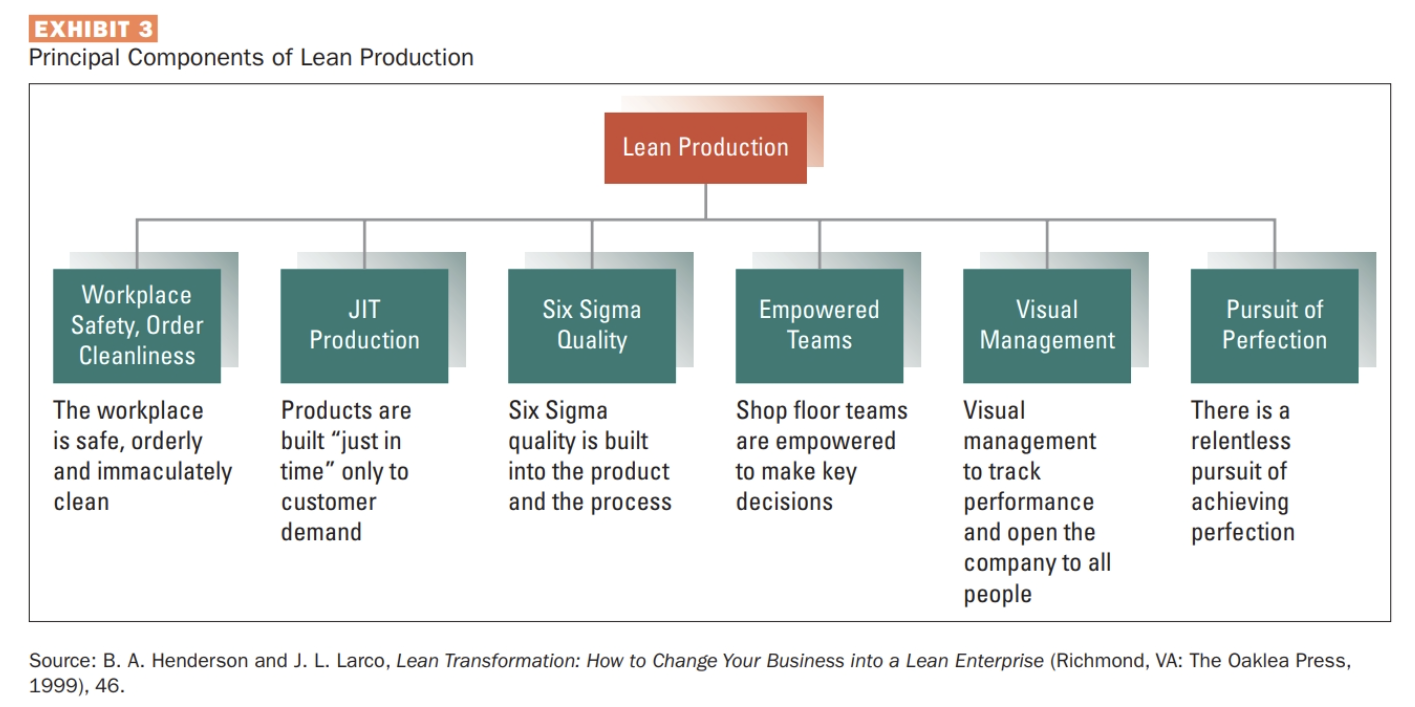
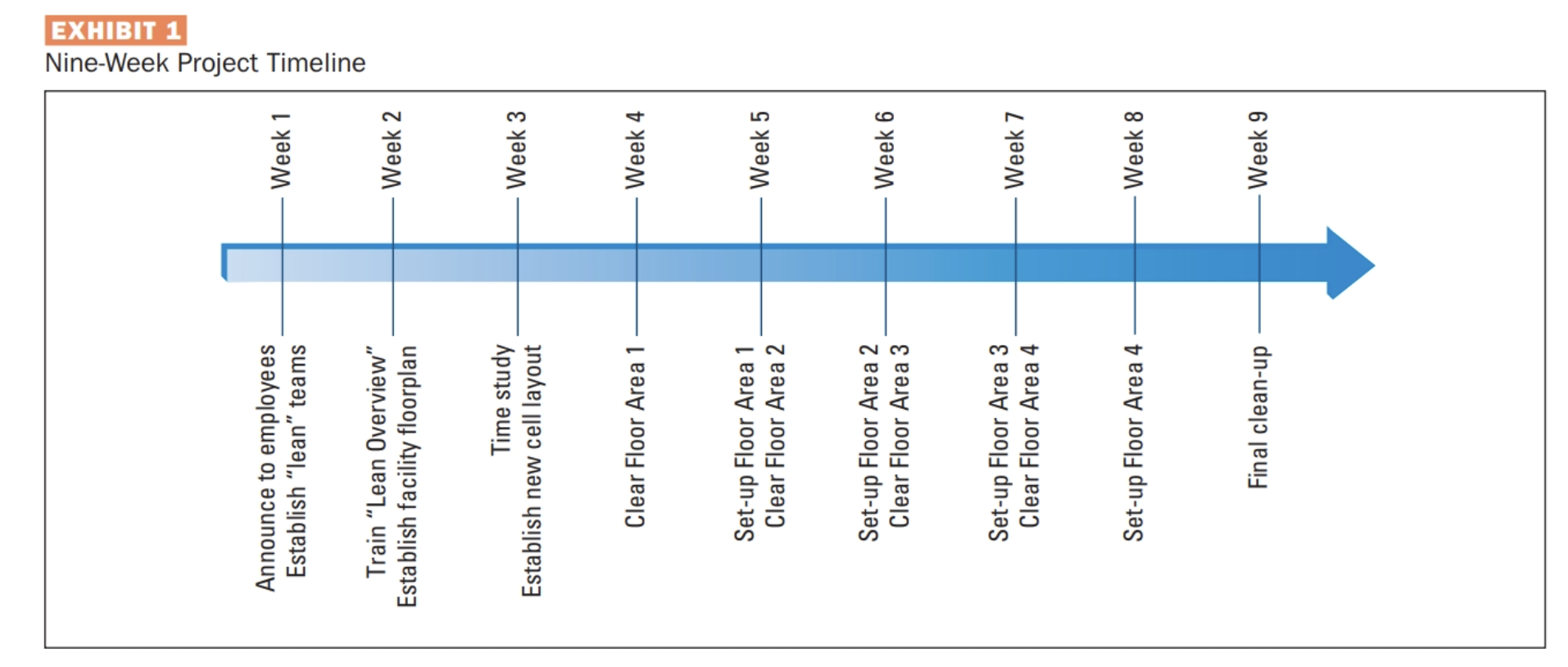
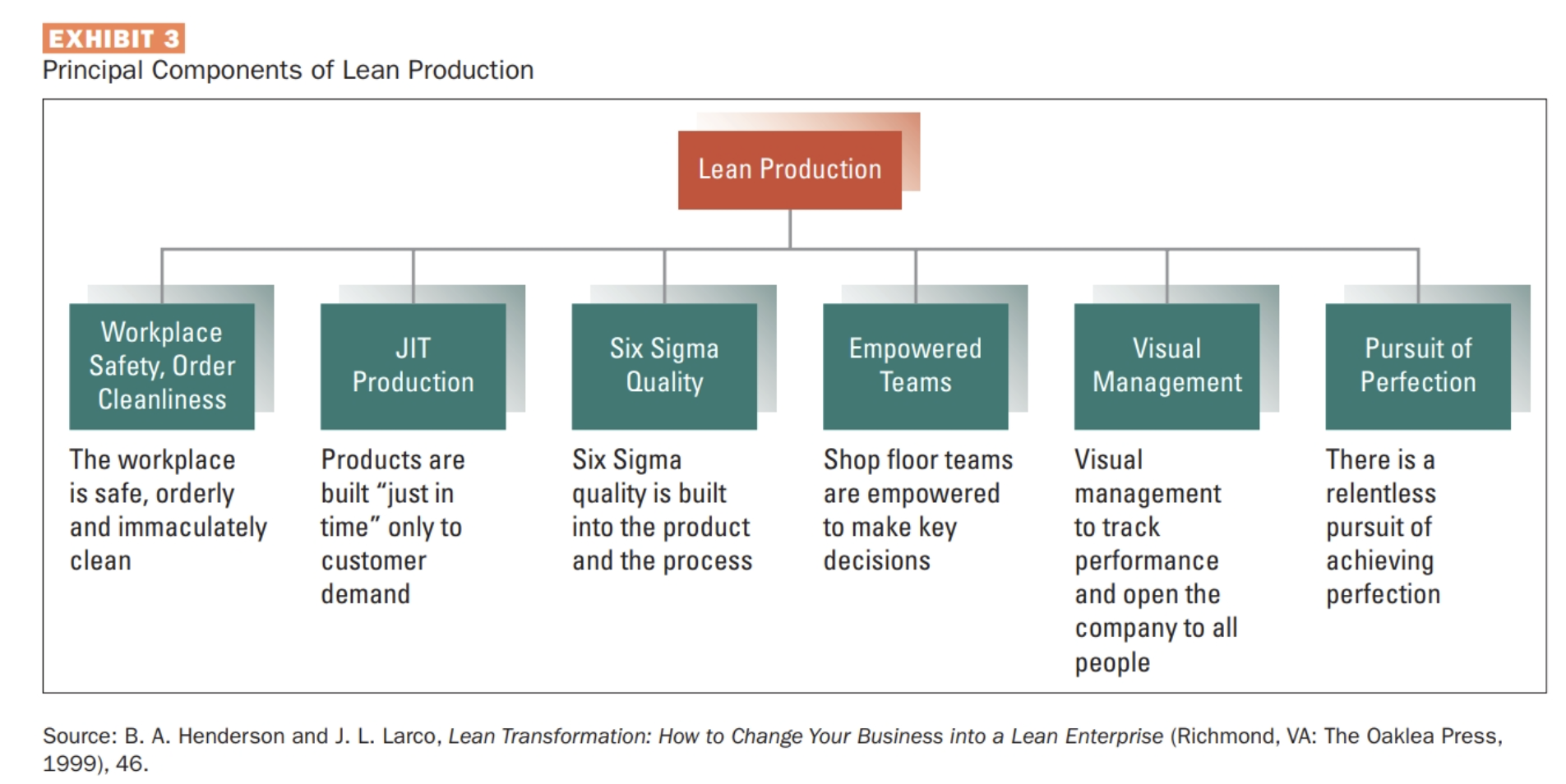
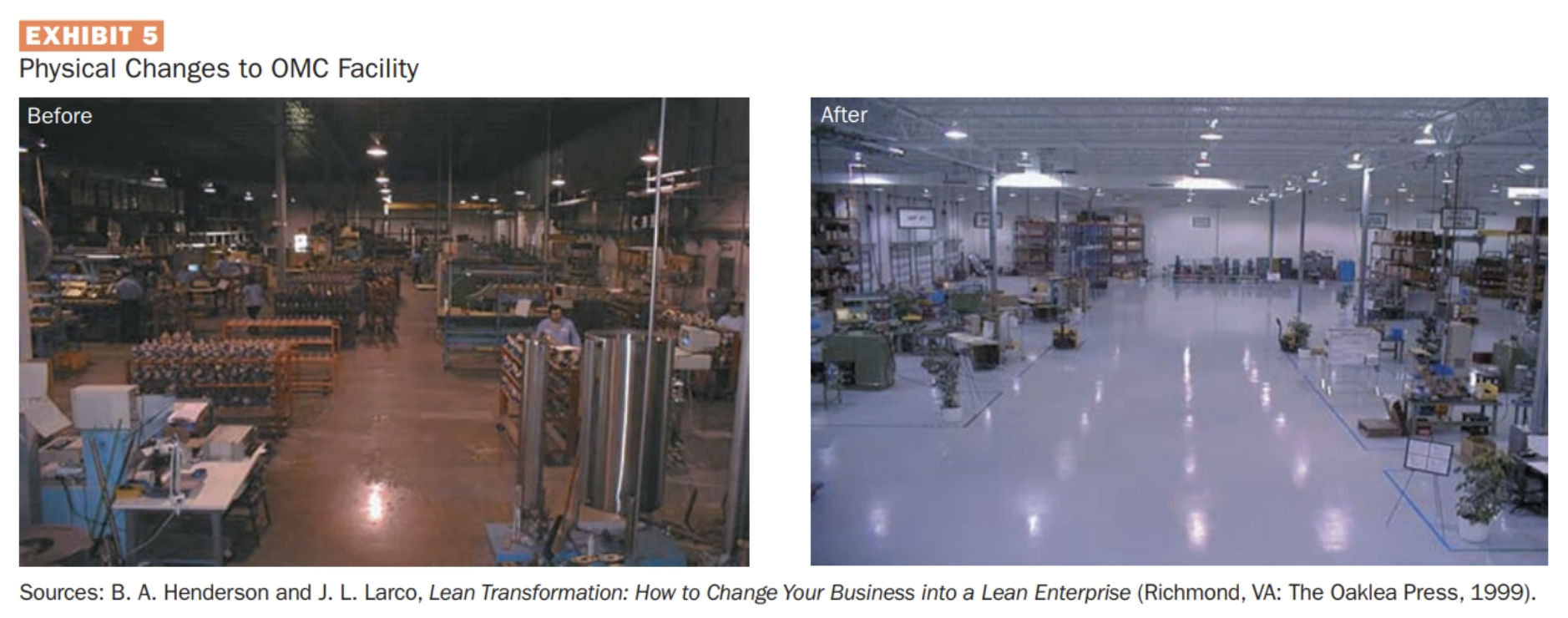

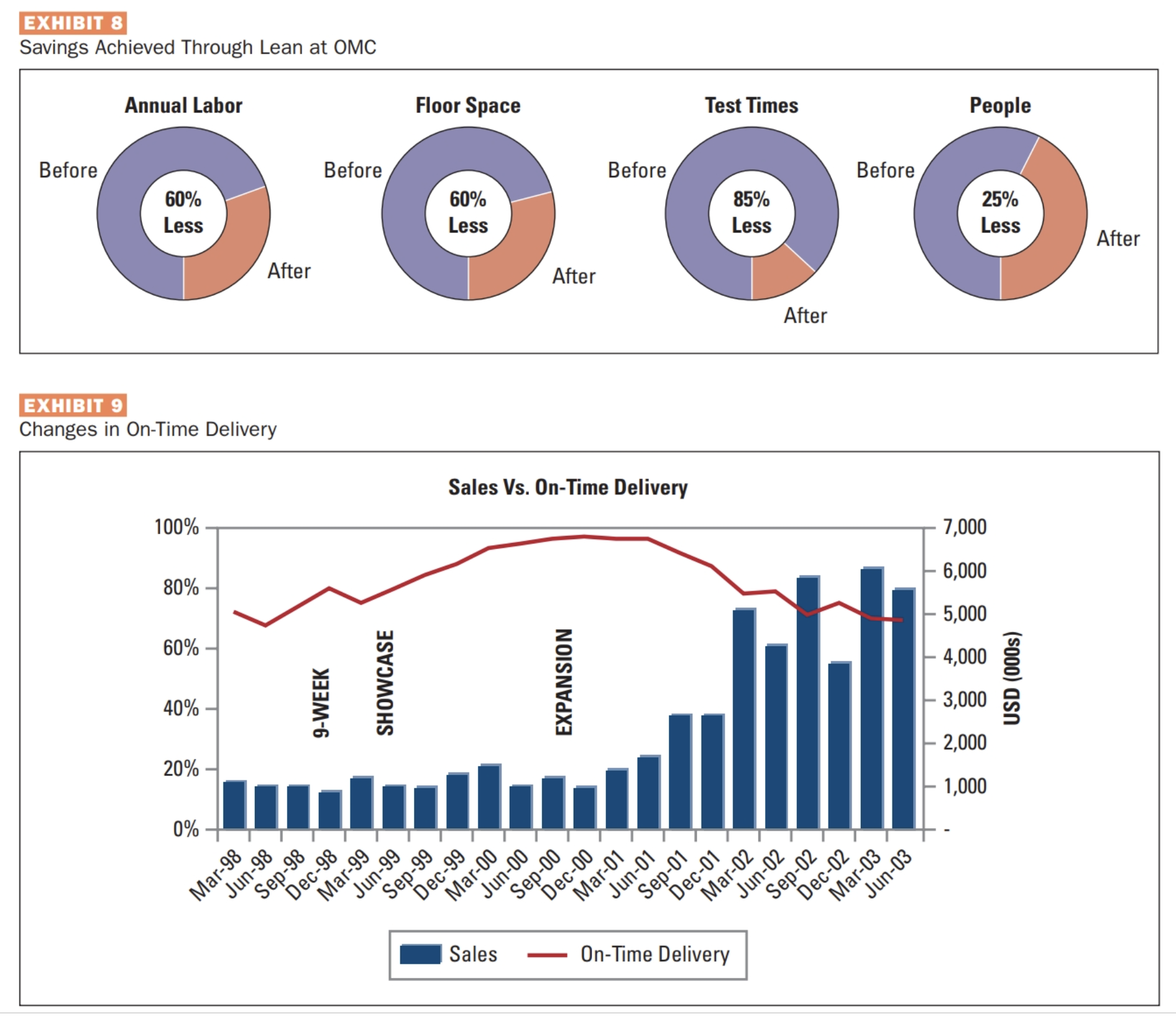
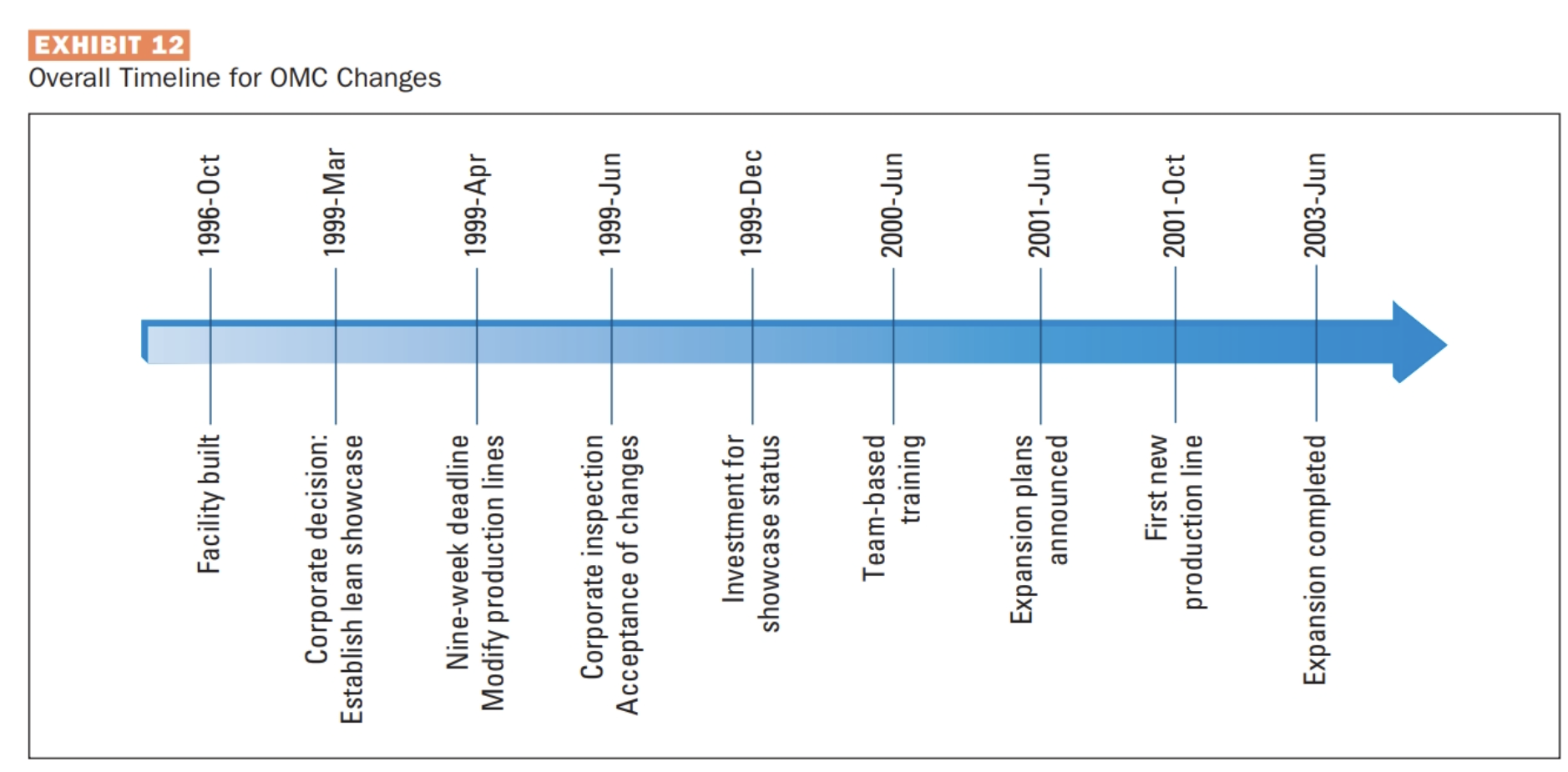
EXHIBIT 3 Principal Components of Lean Production Workplace Safety, Order Cleanliness The workplace is safe, orderly and immaculately clean JIT Production Products are built "just in time" only to customer demand Lean Production Six Sigma Quality Six Sigma quality is built into the product and the process Empowered Teams Shop floor teams are empowered to make key decisions Visual Management Visual management to track performance and open the company to all people Pursuit of Perfection There is a relentless pursuit of achieving perfection Source: B. A. Henderson and J. L. Larco, Lean Transformation: How to Change Your Business into a Lean Enterprise (Richmond, VA: The Oaklea Press, 1999), 46.
Step by Step Solution
There are 3 Steps involved in it
Step: 1
Given the situation at Orlando Metering Company OMC Vice President Ed Cucinelli faces a critical decision whether to reimplement the lean manufacturin...
Get Instant Access to Expert-Tailored Solutions
See step-by-step solutions with expert insights and AI powered tools for academic success
Step: 2

Step: 3

Ace Your Homework with AI
Get the answers you need in no time with our AI-driven, step-by-step assistance
Get Started


